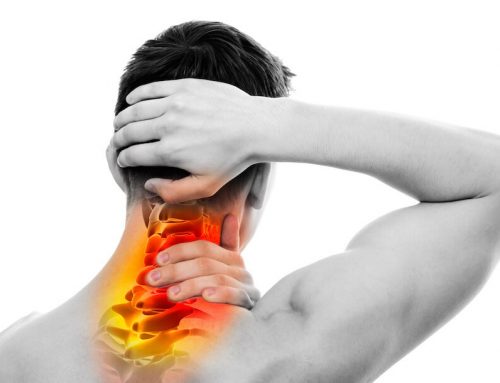
In Part 1 of this blog we discussed the mechanism of injury of concussion, the short-term symptoms, and the relationship this type of injury has to the neck. You can read Part 1 here.
Long-term symptoms & implications
Long-term implications of concussions can range from mild to severe. Some of the more common and mild side-effects include headaches, dizziness/vertigo, light sensitivity, and depression. More serious long-term effects can be neurodegenerative conditions such as Alzheimer’s and Parkinson’s disease. The most serious long term implication of concussions is in the category of Chronic Traumatic Encephalopathy (CTE). This term is commonly used in athletes, especially football, and can cause extremely serious symptoms including:
- Cognitive impairments such as memory loss
- Psychological effects such as mood changes, impulsive behavior, depression, anxiety and suicidal thoughts
- Substance abuse
- Speech and language difficulties
- Difficulty walking
- Changes in vision and/or smell
- Dementia
More vulnerable after a concussion
The latest research has told us that once you have had a concussion, you are exponentially more likely to suffer another one. Additionally, each subsequent concussion leaves you more vulnerable to the next one. The brain is a very sensitive tissue and the mechanisms that are in place to keep the brain functioning properly are forever affected by a concussion. Second-impact syndrome (SIS) occurs when the brain swells rapidly in response to a second concussion that happens in close proximity to the first, in which the symptoms of the first concussion have not yet completely subsided. Essentially, once the brain suffers a concussive trauma, it is more vulnerable to injury afterwards.
Treatment options
Traditional treatment of concussion consists of pain medications and activity modification. Restriction of activities and rest are commonly prescribed until patient is no longer symptomatic. The problem with this treatment strategy is that it completely ignores the implications with the neck.
As mentioned earlier, it is extremely rare to suffer a head injury without also injuring the upper neck. The weakest point in the kinetic chain will often suffer the greatest insult in any trauma. Therefore, as the upper neck is the area with the most range of motion, it is also the area most vulnerable to injury because it is relatively unstable. When a misalignment occurs, it can create tension in the surrounding ligaments, muscles, joints, and vasculature. It can also impede the natural flow of blood and Cerebrospinal fluid (CSF) from the brain as it is attempting to heal from the trauma. The best (and only) solution to this problem is to precisely analyze and realign the Cranio-Cervical Junction (CCJ) through specific Upper Cervical Chiropractic care. The objective is to remove the interference created by the concussive trauma, thus allowing the brain to heal properly and efficiently. Here is perhaps the biggest takeway: The sooner the alignment is repaired, the better the prognosis for healing. According to research by Schneider et al. 2014, treatment focused on the neck and vestibular system helps youths get back to activity quicker in those who suffer sports related concussions and have symptoms of neck pain, headaches, and dizziness.
Therefore, if you or someone you know has suffered a recent concussion, the sooner they get proper treatment the better the prognosis for recovery. We are available in Walnut Creek, CA to provide Upper Cervical Chiropractic care to those who have suffered from concussion or whiplash injuries.






